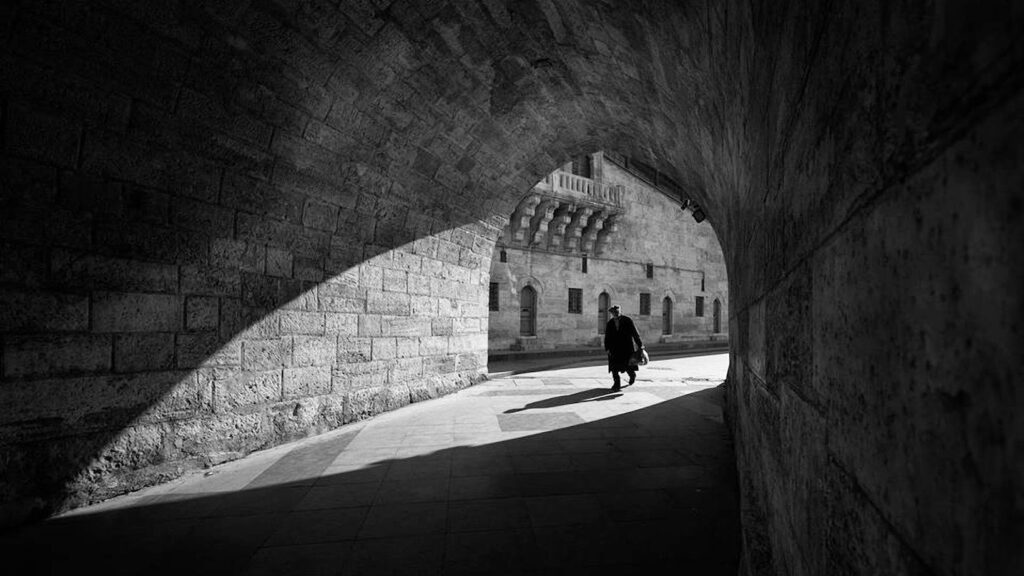Delving into the depths of history, one can’t help but be intrigued by the mysterious Catacombs of San Sebastiano. These ancient subterranean burial sites, nestled beneath the bustling city of Rome, offer a unique glimpse into the past.
Catacombs of San Sebastiano
Situated along the Appian way, these catacombs uncoil over an area roughly 15,000 square meters. Complex and intricate, their layout consists of four levels. It’s intricate layout features narrow, winding passageways, often leading to dead ends – a clear indication of the security system to keep intruders out. Varied in design, some corridors stretch for several kilometers, showcasing the extensive nature of the structure.

Inside, the catacomb walls brim with rows of loculi, small rectangular niches, where the ancient Romans placed their deceased. Various cubicula, private family chambers, scrupulously dot the underground labyrinth. These chambers, often adorned with Christian symbols and biblical scenes, deliver glimpses into the realm of early Christian art.
Art and Architecture in the Catacombs
A detailed exploration reveals the Catacombs of San Sebastiano display diverse art forms, adorning the walls with frescoes, featuring similar themes yet unique in their execution. These art pieces predominantly represent biblical narratives, executed in a stylized yet simplistic manner. Graeco-Roman motifs, such as the Good Shepherd, Jonah and the Whale, and the Orans figure, recur in the archaic Christian iconography, signifying eternal life and resurrection.
Moreover, the architecture within the catacombs portrays strategic planning. A network of tunnels, loculi, and cubicula reflects the early Christian burial customs with an artful balance of functionality and aesthetics. Arched ceilings, strategic light slits, and well-arranged burial slots exhibit the mastery of early engineers.

Besides the burial niches, stand-out features include the Triclia or dining halls, where pilgrims commemorated the dead with meals and rites, showcasing the societal norms in the setting. Thus, the art and architecture of the Catacombs of San Sebastiano unveil layers of history and culture, providing a notebook sketch of early Christian life.
Guided Tour of the Catacombs of San Sebastiano
A guided tour imparts a comprehensive understanding of the catacombs’ historical significance and architectural brilliance. In-depth explorations encompass four levels filled with narrow pathways, intimate burial niches (loculi), and family tomb chambers (cubicula). Tours emphasize early Christian symbols featuring in the art form, for instance, anchors symbolizing hope, peacocks representing eternal life, and biblical scenes from the Old Testament.
Additionally, tours unravel the Triclia halls’ significance, recapitulating rituals where pilgrims shared communal meals to honor the dead. Visitors admire the rectangular baptistery, credited for spiritual gathering, symbolizing the faith of early Christians. To add to the intrigue, guided tours offer insights into the catacombs’ strategic planning, integrating functional tunnels with aesthetic elements. An awe-inspiring manifestation of both architectural strategy and cultural tradition, each bend of the Catacombs of San Sebastiano, delicately unveiled in a guided tour, invites you on a journey back through time, deep into the heart of the early Christian world.
The Catacombs in Relation to Other Roman Catacombs
Comparatively, the Catacombs of San Sebastiano signify an architectural marvel representing early Christian life and culture against other Roman catacombs. These catacombs, such as the Catacombs of Domitilla, Priscilla, and Sant’Agnes, embody distinctive attributes like complex maze-like tunnel structures, ceiling graves, and vintage frescoes.
 However, the Catacombs of San Sebastiano’s unique offering is the well-preserved Triclia dining halls for pilgrims and a rectangular baptistery for spiritual gatherings. Among these catacombs, the San Sebastiano catacombs stand out with their systematic planning that offers a balance between aesthetics and functionality. Thus, blending a thoughtful layout with subterranean beauty, the Catacombs of San Sebastiano hold their own against other Roman catacombs, enlightening visitors with a unique blend of early Christian culture, architecture, and artistic expression.
However, the Catacombs of San Sebastiano’s unique offering is the well-preserved Triclia dining halls for pilgrims and a rectangular baptistery for spiritual gatherings. Among these catacombs, the San Sebastiano catacombs stand out with their systematic planning that offers a balance between aesthetics and functionality. Thus, blending a thoughtful layout with subterranean beauty, the Catacombs of San Sebastiano hold their own against other Roman catacombs, enlightening visitors with a unique blend of early Christian culture, architecture, and artistic expression.
Significance of the Catacombs Today
The Catacombs of San Sebastiano continue to captivate with their historical significance and architectural brilliance. They’re a testament to early Christian life, offering a unique blend of culture, architecture, and art. Their complex layout, adorned with early Christian art, still stands out among other Roman catacombs. The well-preserved Triclia dining halls and the rectangular baptistery are key highlights, showcasing a remarkable balance between aesthetics and functionality. These catacombs aren’t just an archaeological marvel; they’re a beacon of the past, shedding light on the faith, culture, and practices of early Christians. The Catacombs of San Sebastiano thus remain an enlightening destination for those seeking to understand the depth and evolution of early Christian history.
